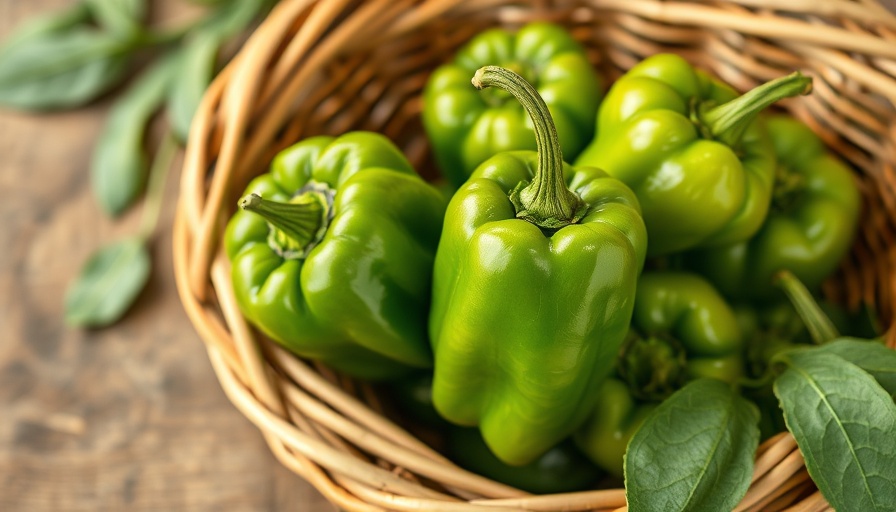
The Flavorful World of Hatch Peppers
If you’ve ever been surrounded by the stunning landscape of New Mexico in late summer, you will undoubtedly recognize the tantalizing aroma of roasted Hatch peppers wafting through the air. These chiles are more than just a culinary delight; they are a key ingredient deeply woven into the tapestry of Southwestern cuisine. Growing your own Hatch peppers offers you the chance to capture that distinct flavor right in your backyard, enhancing everything from salsas to stews.
Understanding the Basics of Hatch Peppers
Hatch peppers belong to the Capsicum annuum species, primarily cultivated in the Hatch Valley of New Mexico. The region’s unique climate, characterized by hot days and cool nights, along with its nutrient-rich soil, contributes significantly to the peppers’ robust flavor. Although technically classified under the New Mexico cultivar group, it's important to note that the Hatch label is reserved for those grown specifically in this valley.
That said, gardening enthusiasts can successfully grow similar varieties elsewhere, and although they might not officially be called "Hatch peppers," they still present an opportunity for a delicious yield. The allure of Hatch peppers lies not only in their varying levels of heat—from mild to extra spicy—but also in their smoky, earthy taste that many crave.
Essential Steps for Growing Hatch Peppers
To cultivate these delightful peppers successfully, you will need to follow several key steps:
1. Seed Preparation
Start your Hatch pepper seeds indoors about six to eight weeks before the last frost date. These plants thrive in warm conditions, requiring soil temperatures between 80-90 degrees Fahrenheit for optimal germination. Utilizing seedling heat mats can help achieve these temperatures.
2. Transplanting Outdoors
Once the seedlings have sprouted and temperatures remain consistently warm, you can begin the hardening-off process—introducing your seedlings to outdoor conditions gradually. When nighttime temperatures are consistently above 60 degrees Fahrenheit, it's time to transplant them into well-draining, nutrient-rich soil.
3. Watering and Feeding Techniques
Hatch peppers require moderate watering; over-saturation can lead to root rot. Water your plants two to three times a week, ensuring the soil remains moist but never soggy. For feeding, compost is your ally, adding nutrients while improving soil health.
Fruits of Your Labor: What to Expect
Expect to wait about 75-90 days before enjoying your peppers. The harvest period typically spans late summer to early fall. Harvesting Hatch peppers at the right time is essential to unlock their full flavor potential—go for vibrant green peppers for those zesty dishes or wait for the mature red peppers for a richer flavor.
How you prepare your harvest can elevate your culinary creations. Roasting fresh Hatch peppers enhances their depth, perfect for adding to sauces or freezing for later use. You can also dry them for flavorful seasoning.
Harvesting and Preserving Your Peppers
Hatch peppers can be harvested earlier while still green or allowed to mature to a red color. The choice affects their flavor and uses in the kitchen. If you're looking to keep the flavors alive throughout the winter, consider roasting and freezing your peppers post-harvest. Roasted Hatch peppers are a fantastic addition to various recipes, including soups, dips, and even salads.
Pest Management Strategies
Like all crops, Hatch peppers can be susceptible to pests. Regularly inspect your plants for signs of pests such as aphids or spider mites. Organic pest control methods, like the introduction of beneficial insects and using neem oil, offer effective solutions without harming the environment. Additionally, companion planting with marigolds and basil can deter pests and enhance growth.
Incorporating Hatch Peppers into Your Meals
Once you harvest your peppers, incorporating them into meals can transform everyday dishes into mouthwatering feasts. From green chili stews and enchiladas to salsas and pasta dishes, the versatility of Hatch peppers allows you to experiment freely. Roasted Hatch chili, for example, adds an aromatic, smoky flavor to anything from tacos to roasted meats.
Conclusion: Embrace the Green Chile Experience
Growing your own Hatch peppers not only provides a delicious crop but also connects you with a rich culinary tradition steeped in the authenticity of New Mexico. With proper care, attention, and a little patience, you'll be rewarded with a bountiful harvest that enhances your cooking and brings a taste of the Southwest to your kitchen all year round. Embrace your inner gardener, prepare your garden space, and let the flavor of Hatch peppers inspire your culinary adventures!
 Add Row
Add Row  Add
Add 




Write A Comment